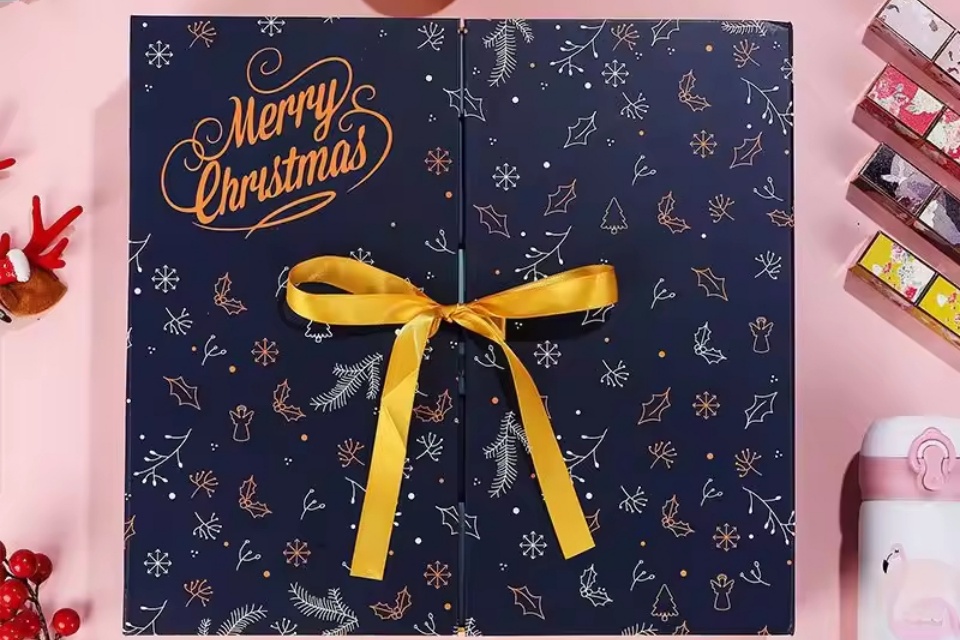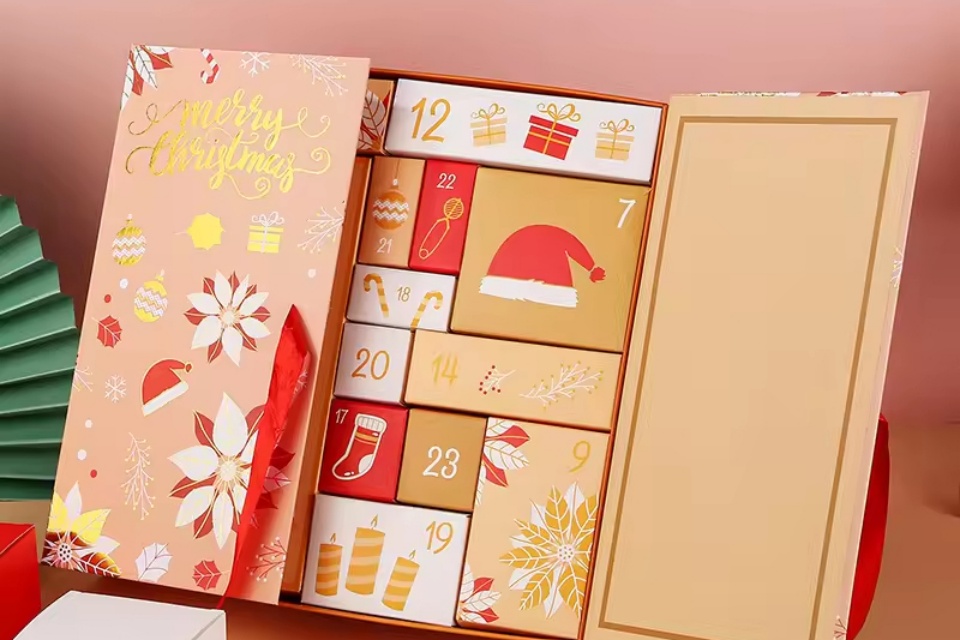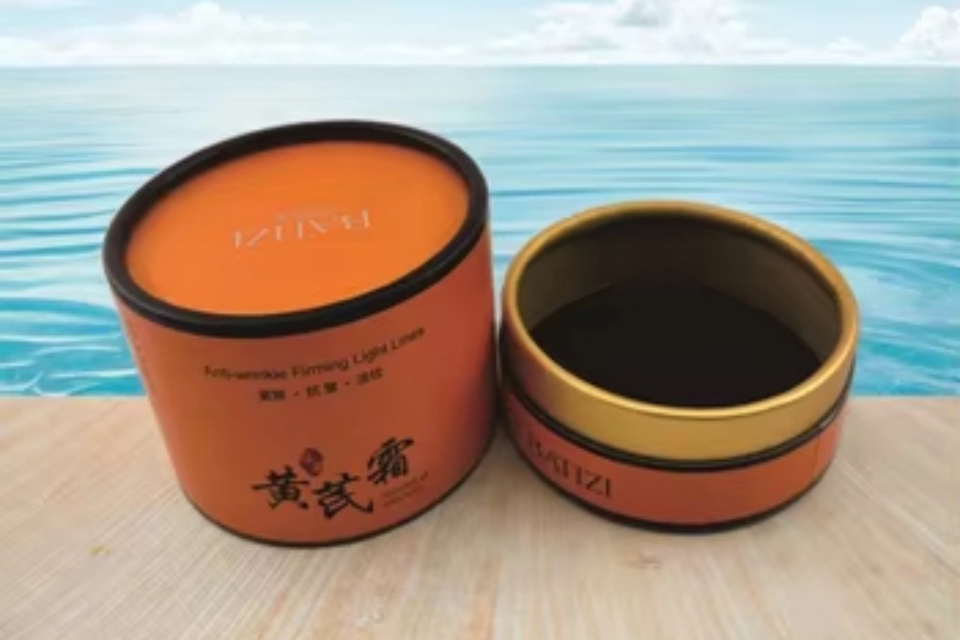Our News
Luxury Cosmetic Packaging Ideas For High-End Brands
Luxury Cosmetic Packaging Ideas For High-End Brands
Summary
Luxury cosmetic packaging is a crucial element in the branding and marketing strategies of high-end beauty brands, serving as both a protective container and an integral part of the overall consumer experience. Characterized by the use of premium materials and innovative designs, luxury packaging conveys brand identity and reflects the values of sophistication, quality, and exclusivity. As the cosmetics industry continues to evolve, the significance of packaging has grown, intertwining aesthetics with functionality and sustainability, making it an essential consideration for luxury brands seeking to appeal to discerning consumers.
The evolution of luxury cosmetic packaging has been heavily influenced by shifts in consumer preferences and cultural trends. Initially defined by minimalist aesthetics, the packaging landscape has seen a marked transition toward maximalist designs that embrace bold colors and intricate details. Additionally, there is a growing emphasis on sustainability, with many brands adopting eco-friendly materials and practices in response to increasing consumer demand for environmental responsibility. High-profile brands such as Aesop and La Mer exemplify this trend, integrating sustainable practices into their packaging while maintaining their luxury appeal.
Key controversies within the luxury cosmetic packaging domain include the challenge of balancing opulence with eco-consciousness. While consumers are increasingly prioritizing sustainability, luxury brands often face the dilemma of maintaining their high-end image while transitioning to recyclable or biodegradable materials. This complexity raises questions about the authenticity of luxury brands' commitments to sustainability and whether these efforts are merely marketing strategies rather than genuine practices.
Looking ahead, the future of luxury cosmetic packaging is expected to be shaped by ongoing technological advancements, innovative design trends, and a continued commitment to sustainability. As brands navigate these challenges, they will need to find creative ways to enhance the consumer experience while addressing environmental concerns, ensuring that luxury packaging remains both functional and aligned with evolving consumer values.
Historical Background
The evolution of luxury cosmetic packaging is deeply intertwined with the broader history of luxury branding and consumer culture. Traditionally, luxury brands have relied heavily on heritage and craftsmanship, as these elements embody unique know-how passed down through generations. This heritage plays a crucial role in creating an authentic luxury experience, allowing brands to resonate with consumers who seek not only high-quality products but also a rich narrative behind them.
In the early days, cosmetic packaging often mirrored the minimalist designs popular in various industries. However, as consumer preferences began to evolve, brands started incorporating more elaborate and maximalist packaging designs. By 2023, a noticeable shift emerged towards bold colors, large fonts, and 3D imagery, marking a departure from the simplicity that characterized earlier designs.
Alongside the aesthetic changes, the rise of sustainability has significantly influenced luxury packaging. Many modern luxury brands, such as Westman Atelier and Ouai, are adopting refillable and recyclable packaging options to appeal to environmentally conscious consumers. Westman Atelier, for instance, emphasizes tactile design with its refillable metal tubes, while Ouai incorporates refill pouches that reduce plastic waste by 60% compared to traditional packaging.
Furthermore, the integration of vintage-inspired design elements has gained popularity. This approach evokes nostalgia through retro typography, illustrations, and color palettes, appealing to consumers who value tradition and authenticity in their luxury purchases. The incorporation of hand-drawn artwork has also become a prominent trend, providing a personal and authentic touch that resonates with specific product demographics.
As the luxury cosmetic market continues to grow and diversify, brands are tasked with balancing their rich heritage with contemporary design trends, sustainability, and the ever-changing expectations of consumers. This ongoing evolution underscores the dynamic nature of luxury cosmetic packaging and its role as a crucial tool for brand identity and consumer engagement in a competitive market.
Key Elements of Luxury Cosmetic Packaging
Luxury cosmetic packaging is essential for conveying brand identity and attracting discerning customers.
Materials
The choice of materials is fundamental in luxury cosmetic packaging. High-quality materials such as glass, metal, and premium plastics are preferred for their aesthetic appeal and durability. Glass is fully recyclable and can be reused indefinitely without losing quality, making it a sustainable option for high-end brands. Aluminum is also a strong contender due to its durability and recyclability, which helps brands lower their carbon footprint over time. Additionally, innovative materials like biodegradable plastics and plant-based packaging are gaining popularity as brands seek to balance luxury with sustainability.
Design
The design of luxury cosmetic packaging is marked by uniqueness and elegance. This includes custom shapes, intricate patterns, and refined finishes that enhance the visual appeal. Attention to detail is crucial; from the choice of font on the label to the quality of closures and seals, every aspect contributes to the overall luxury experience. Minimalist designs, characterized by clean lines and subtle colors, can create a timeless aesthetic that appeals to a broad audience.
Functionality
While aesthetics are paramount, luxury packaging must also be practical. The packaging should facilitate ease of use, be travel-friendly, and provide adequate protection for the product. A successful luxury cosmetic packaging design strikes a balance between beauty and functionality, ensuring that the user experience is as refined as the product itself.
Tactile Experience
The tactile elements of luxury packaging—such as soft-touch finishes, smooth glossy surfaces, or embossed textures-enhance the sensory experience for consumers. This tactile interaction reinforces the perception of quality and luxury, as customers are often influenced by how a product feels in their hands.
Sustainability
As consumer preferences shift towards eco-consciousness, integrating sustainable practices into luxury packaging has become a vital consideration. Brands are increasingly adopting recyclable materials, utilizing post-consumer recycled content, and exploring alternative biodegradable options. Sustainable packaging not only aligns with the values of a growing segment of consumers but also helps reinforce a brand's commitment to environmental stewardship without compromising luxury aesthetics.
Brand Identity
Finally, effective luxury packaging should reflect and reinforce the brand identity. This includes communicating the brand's values, ethos, and story through cohesive design elements that resonate with the target market. An emotional connection with consumers is pivotal in the luxury segment, as it can enhance customer loyalty and drive sales.
Innovative Packaging Ideas
Customization and Personalization
Customization in luxury cosmetic packaging has become increasingly popular as brands seek to reflect individual preferences and styles. Options such as monogramming and bespoke designs not only add a personal touch but also enhance the luxury experience for consumers. By offering tailored packaging solutions, brands can create a deeper emotional connection with their customers, making their products feel more exclusive and desirable.
Sustainable Practices
As consumers become more environmentally conscious, sustainable packaging has gained prominence in the cosmetics industry. This trend involves using eco-friendly materials and creating designs that minimize waste, addressing concerns about single-use packaging that often ends up in landfills. Brands are now encouraged to adopt sustainable practices that align with their values and those of their target market, which can enhance their reputation and attract environmentally aware consumers.
Interactive Features
Incorporating technology into packaging design is another innovative approach that has gained traction. Features such as QR codes, augmented reality, and NFC technology can provide consumers with additional information and enhance their engagement with the product. For instance, a beauty product might offer tutorials or exclusive content through an interactive experience, thereby increasing brand loyalty and providing valuable information that goes beyond the physical product itself.
Unique Shapes and Structures
Distinctive packaging shapes and structures can differentiate luxury brands from their competitors. Unconventional designs not only capture attention but also create intrigue, making the unboxing experience more memorable for consumers. Customizing the shape of product containers allows brands to stand out on crowded shelves, enhancing their market appeal.
Textural Elements and Finishes
Textured packaging finishes, such as matte, glossy, or embossed surfaces, can significantly impact consumer perception of quality and luxury. These tactile elements contribute to a more engaging product experience, enticing consumers to interact with the packaging before even using the product inside. Additionally, integrating luxurious finishes, such as metallic accents or gradient coloring, can elevate the visual appeal of the packaging, aligning with the preferences of high-end customers.
Maximalist Design Trends
While minimalist designs have long been a staple in luxury packaging, there is a noticeable shift towards maximalist aesthetics. Bold colors, large fonts, and intricate designs are becoming more prevalent, catering to a consumer base that values striking visual elements. This trend allows brands to convey their identity more vividly and attract consumers who are drawn to vibrant and expressive packaging.
By leveraging these innovative packaging ideas, luxury cosmetic brands can create products that not only meet consumer expectations but also enhance their overall brand experience. This combination of aesthetics, functionality, and emotional appeal is essential for maintaining relevance in the competitive beauty market.
Case Studies of High-End Brands
Aesop
Aesop is a prominent example of a luxury beauty brand that merges minimalist aesthetics with a commitment to sustainability. As a certified B Corp since 2020, Aesop actively supports carbon offset programs and community-based initiatives, demonstrating a strong ethos of environmental responsibility. The brand is renowned not only for its premium skincare, haircare, fragrance, and body care products but also for its use of recyclable packaging and responsible ingredient sourcing. This approach not only enhances the brand's appeal among environmentally conscious consumers but also reinforces its position as a leader in the sustainable luxury market.
La Mer
La Mer emphasizes the importance of natural and organic ingredients, avoiding harmful chemicals and synthetic fragrances. This commitment extends to its packaging, which is designed to be recycled or biodegradable, helping to minimize the carbon footprint of its luxury offerings. Additionally, La Mer prioritizes transparency in its sustainability initiatives, showcasing its dedication to ethical practices, such as being cruelty-free, which resonates with modern consumers' values.
Typology
Founded by former L'Oréal executive Ning Li, Typology represents a new wave of luxury brands that prioritize transparency and efficacy. The brand's minimalist approach is reflected in its numbered formulas, which emphasize simplicity and functionality over excessive marketing. Typology is also a certified B Corp, disclosing the environmental score of each product to empower consumers to make informed choices that benefit both their skin and the planet. This level of accountability not only differentiates Typology from competitors but also aligns with the growing demand for sustainable luxury in the beauty industry.
Biossance
Biossance is another brand that embodies the principles of sustainable luxury. It focuses on creating beauty products that are both effective and environmentally responsible. Biossance's commitment to sustainability is evident in its use of renewable sugarcane-derived squalane, which replaces the need for traditional and less sustainable sources. This innovative ingredient choice is complemented by eco-friendly packaging solutions that highlight the brand's overall ethos of ethical luxury.
Chanel
Chanel's packaging is iconic and serves as a benchmark for luxury beauty brands. The black-and-gold lipstick cases are instantly recognizable and symbolize sophistication and elegance in the cosmetics industry. The attention to detail in Chanel's packaging not only enhances the perceived value of the products but also reinforces customer loyalty by providing a consistent and luxurious unboxing experience. This strategy of leveraging signature design elements establishes a strong emotional connection with consumers, fostering brand loyalty over time.
These case studies illustrate how high-end brands effectively utilize luxury packaging not only as a protective element but also as a crucial component of brand identity, customer perception, and sustainable practices. By integrating high-quality materials, innovative design, and ethical considerations, these brands create a powerful narrative that resonates with today's luxury consumers.
Challenges in Luxury Cosmetic Packaging
Luxury cosmetic packaging faces several challenges that intertwine aesthetic demands with functional and environmental considerations. As consumer preferences evolve, brands must navigate these complexities to maintain their prestige while addressing sustainability and practicality.
Sustainability Concerns
One of the primary challenges is the increasing demand for sustainable packaging solutions. The cosmetic industry has been criticized for its reliance on single-use plastics, which contribute to landfill accumulation and microplastic pollution. Transitioning to sustainable materials, such as bioplastics and recycled options, presents hurdles related to cost, availability, and consumer acceptance. While materials like glass and metal offer sustainable advantages due to their recyclability, they often come with higher transportation costs and weight, impacting overall carbon footprints. Balancing sustainability with luxury remains a critical obstacle for brands aiming to integrate eco-friendly practices without compromising their high-end image.
Cost Implications
The financial aspect of adopting sustainable packaging is another significant challenge. While traditional plastic packaging is often more cost-effective, eco-friendly alternatives may initially come at a premium. For example, sustainable packaging options can incur higher short-term costs, but potential long-term savings may arise from regulatory changes, such as plastic packaging taxes. Brands must carefully evaluate their investment in sustainable practices, as consumers express willingness to pay more for environmentally friendly products; however, this acceptance varies across demographics and markets.
Design and Functionality
Luxury packaging must not only look exquisite but also be functional. This involves the intricate design of packaging that enhances user experience while maintaining elegance. Brands face the challenge of creating visually stunning packaging that is also travel-friendly and durable, ensuring that the product can withstand consumer use and transportation demands. The tactile experience, achieved through various textures and finishes, is essential for reinforcing the perception of luxury.
Consumer Expectations
Lastly, meeting the evolving expectations of consumers presents an ongoing challenge. Modern consumers are more informed and concerned about environmental issues, prompting brands to re-evaluate their packaging strategies. Brands need to strike a balance between opulence and sustainability, integrating reusable, refillable, or recyclable options into their offerings. The expectation for transparency and traceability in sourcing materials further complicates packaging decisions, as brands must provide clear information about their environmental impact.
Future Trends in Luxury Cosmetic Packaging
The luxury cosmetic packaging industry is on the brink of transformation, driven by sustainability, innovation, and evolving consumer preferences. As brands strive to align with the values of a more environmentally conscious consumer base, key trends are emerging that will shape the future of packaging in this sector.
Sustainability as a Core Principle
Sustainability has transitioned from a secondary consideration to a fundamental aspect of luxury cosmetic packaging. As affluent consumers increasingly demand eco-friendly practices, luxury brands are compelled to redefine their identities around sustainable principles. This shift encompasses the adoption of recycled and recyclable materials, as well as the development of innovative, biodegradable packaging options. Brands are now exploring refillable bottles and waterless beauty products, which require less packaging and reduce reliance on plastic. This focus on sustainability not only meets consumer expectations but also represents a competitive advantage in an increasingly eco-conscious market.
Technological Advancements
The integration of technology into luxury cosmetic packaging is also expected to accelerate. Innovations such as smart packaging—incorporating QR codes and NFC tags-will provide consumers with interactive experiences, allowing them to access product details, tutorials, and authenticity verification directly through their packaging. Additionally, airless packaging technology will continue to gain traction, as it helps prevent product degradation and minimizes waste, ensuring that formulas remain intact and effective.
Design Trends
Minimalist design is another key trend influencing luxury packaging. Brands are gravitating towards elegance and simplicity, focusing on unique shapes, high-quality materials like glass and metal, and refined detailing to create an alluring visual appeal. As competition intensifies, the emphasis on distinctive and aesthetically pleasing packaging will remain crucial for capturing customer attention and fostering brand loyalty.
Collaboration and Innovation
Looking ahead, collaboration among brands, material scientists, and innovators will play a vital role in advancing sustainable packaging solutions. Joint initiatives aimed at knowledge-sharing and investment in scalable solutions are essential to overcoming the challenges of transitioning to eco-friendly materials. This collaborative approach is poised to foster creativity and drive significant changes in how luxury products are packaged and presented to consumers.
Categories
Latest News
Contact Us
Contact: Aaron Lee
Phone: +8613570866244
Tel: +8675529490260
Add: Li Songlang 2nd Industrial Zone,No.18,FengTang Rd,Guangming New District


